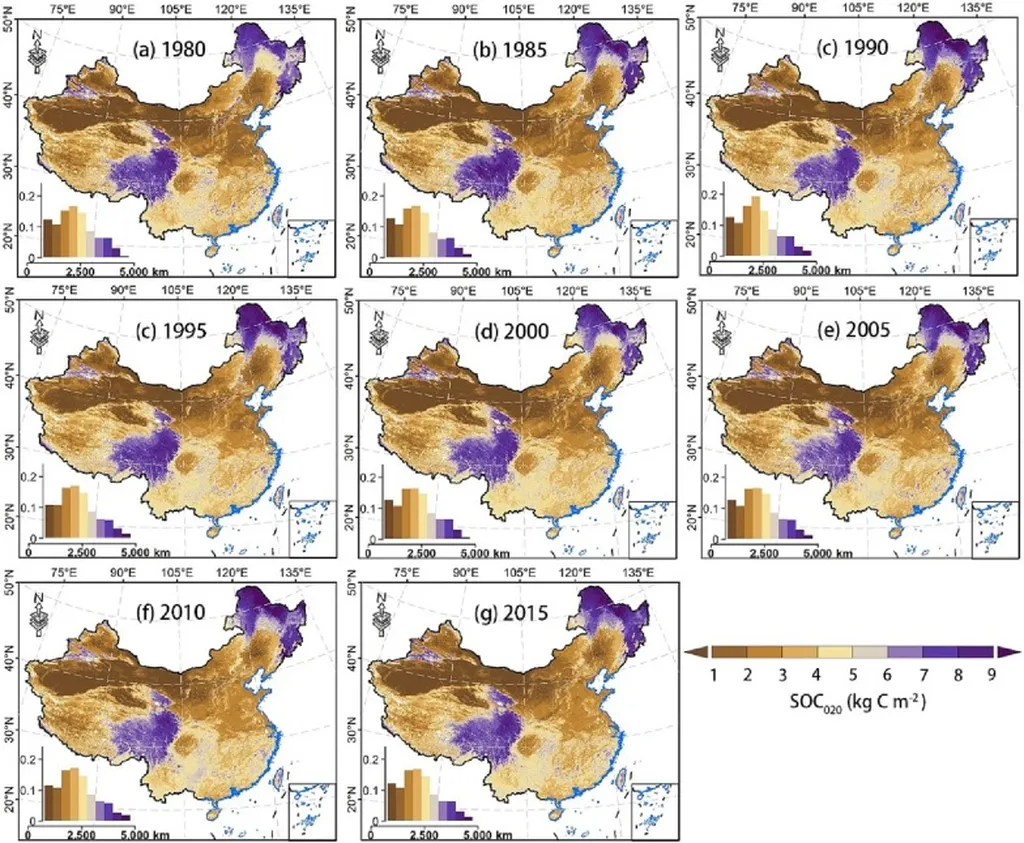In the heart of southern China, a groundbreaking study led by Bifeng Hu from the Department of Land Resource Management at Jiangxi University of Finance and Economics is revolutionizing how we understand and map soil organic carbon (SOC) in farmlands. Published in the esteemed journal *Geoderma* (which translates to *Soil Science* in English), this research is not just about dirt; it’s about unlocking the potential of our land to boost agricultural productivity and mitigate climate change.
Hu and his team have tackled a longstanding challenge in agriculture: the strong variation of SOC due to natural and human activities. “Mapping SOC in farmlands is crucial for improving management and production,” Hu explains. “But the variability caused by different factors makes it a complex task.”
The team turned to a sophisticated Bayesian spatial model called Integrated Nested Laplace Approximation with the Stochastic Partial Differential Equation (INLA-SPDE) to create a detailed SOC map of Jiangxi Province’s farmland. They used an extensive soil survey dataset of over 16,000 samples, making it one of the most comprehensive studies of its kind.
But they didn’t stop there. To ensure the model’s accuracy, they compared INLA-SPDE with other widely used predictive models like Random Forest (RF), Geographically Weighted Regression (GWR), and Ordinary Kriging (OK). The results were impressive. INLA-SPDE outperformed all other models, showing a significant improvement in predictive power.
The study also shed light on the key factors influencing SOC distribution. “We found that the amount of straw return, mean annual precipitation, and mean annual solar radiation are the most important covariates for mapping SOC,” Hu reveals. This insight is invaluable for farmers and policymakers looking to optimize soil management practices.
Moreover, the team used an interpretable machine learning model, the SHapley Additive exPlanation (SHAP), to quantify the environmental covariates’ contribution to mapping SOC. This approach provides a clear understanding of how different factors influence SOC distribution, making the model more interpretable and practical for real-world applications.
The implications of this research are far-reaching. For the energy sector, understanding SOC distribution can help in developing sustainable bioenergy crops and improving soil carbon sequestration strategies. “Our study demonstrates the advantages of INLA-SPDE on mapping SOC compared with geostatistical and RF for SOC mapping,” Hu states. “It provides valuable implications for interpreting the results of digital soil mapping.”
As we face the challenges of climate change and food security, studies like this one are more important than ever. By harnessing the power of advanced modeling techniques and extensive data, we can unlock the secrets of our soil and pave the way for a more sustainable future.

